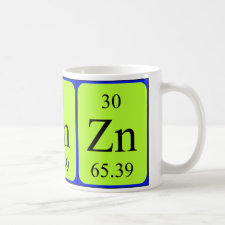
Authors: Rezaei Kahkha MR, Kaykhaii M
Article Title: Determination and extraction of zinc from aqueous solution using ion-imprinted polymer.
Publication date: 2014
Journal: International Research Journal of Applied and Basic Sciences
Volume: 8
Issue: (6)
Page numbers: 707-711.
Alternative URL: http://www.irjabs.com/files_site/paperlist/r_2210_140706014911.pdf
Abstract: Zinc is an environmental pollutant, which has been tested and assessed over the past few years from both the toxicological and human health viewpoints. At present study Imprinted polymer particles have been developed as a novel adsorbent for the adsorption of zinc from aqueous solution.Zinc-imprinted polymer was prepared with methacrylic acid (MAA) as the functional monomers, thleneglycoldimethacrylate (EGDMA) as the cross-linking agent, 2,2'-azobisisobutyronitrile (AIBN) as the initiator and Zn (II) ion as the imprint ion. The template Zn (II) ion was removed from the polymer by leaching with a liquid of a 1:1 volumetric ratio of HCl to ethylenediaminetetraacetic acid (EDTA). The capacity and selectivity of Zn(II) ion adsorption were investigated with the imprinted polymer and it's nonimprinted counterpart. The polymer has a maximum adsorption capacity at pH 7.0. The isotherm of their batch adsorption of Zn(II) ions shows a Langmuir adsorption pattern. Imprinted polymer have a much higher capacity and higher selectivity of Zn(II) adsorption than non-imprinted ones. The limit of detection of the proposed method was 0.13 μg L-1 . This research showed that Ion imprinting can be a promising technique of preparing selective adsorbents to separate and preconcentrate metal in a medium of multiple competitive metals. The method was applied to the recovery and determination of zinc in water and waste water samples.
Template and target information: zinc ion, Zn(II)
Author keywords: ion imprinted polymer, preconcentration, atomic absorption spectrometry, Zinc ion, selective adsorption



Join the Society for Molecular Imprinting

New items RSS feed
Sign-up for e-mail updates:
Choose between receiving an occasional newsletter or more frequent e-mail alerts.
Click here to go to the sign-up page.
Is your name elemental or peptidic? Enter your name and find out by clicking either of the buttons below!
Other products you may like:
 MIPdatabase
MIPdatabase









